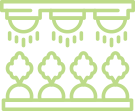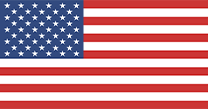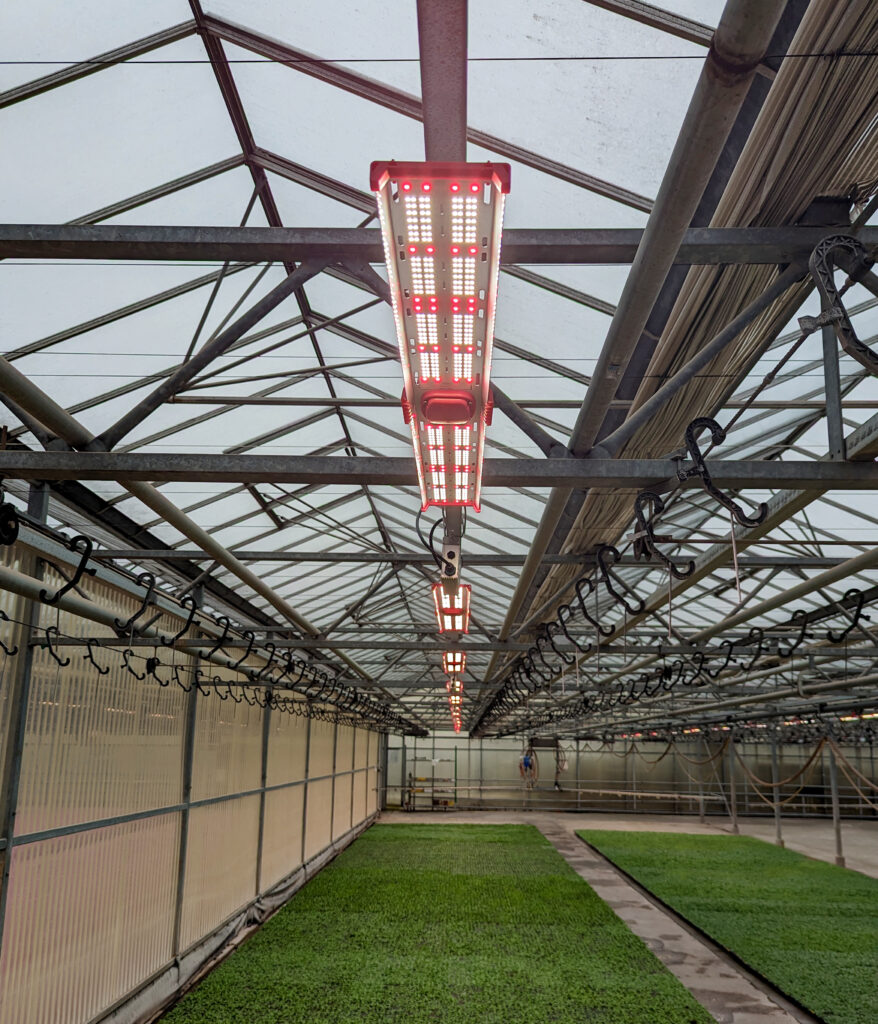
October 4, 2023
THE IMPACT OF WAVELENGTH ON LEAFY GREENS: BEYOND LIGHT INTENSITY
Light is an indispensable factor in the growth of plants. In our previous article, we explored the calculations necessary to supplement natural light in greenhouses for achieving optimal yields and productivity.
In this article, we delve into the effects of distinct light wavelengths (such as blue, green, and red photons) on leafy greens. By understanding how these wavelengths impact plant responses, growers can unlock their potential for optimizing plant growth, pigmentation, and other desired traits for their leafy green crops.
PAR vs PBAR:
Below is a chart showing wavelength ranges and their corresponding wavelength colors. At the top of the chart are two custom spectrums created by JumpLights to target different stages of leafy green cultivation (more on this below). At the bottom of the chart are labeled two light ranges used in horticulture, the PAR range and the PBAR range.
PAR stands for “Photosynthetically Active Radiation,” which refers to the range of light wavelengths between 400 to 700 nanometers (nm) that are utilized by plants for photosynthesis. This specific range of light includes violet, blue, green, yellow, orange, and red wavelengths. PAR is essential for plant growth and development as it fuels the photosynthetic process, enabling plants to convert light energy into chemical energy and produce carbohydrates necessary for their growth. PBAR stands for “Plant Biologically Active Radiation,” which extends beyond the PAR range to include both ultraviolet (UV) and far-red light. In this report, we include the PBAR range.
Understanding how different wavelengths influence plant responses is essential for optimizing horticultural practices and achieving desired outcomes in leafy greens’ growth and development.
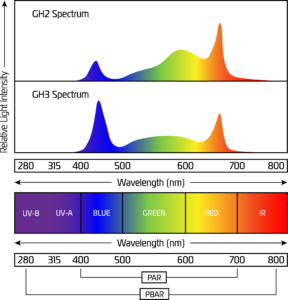
UVB 280 nm to 315 nm and UVA 315 nm to 400 nm
For humans all UV light is invisible, and due to the small wavelength (and thus inversely strong energy), these photons elicit more damage than photons in the PAR range. For example, UVB is what causes sunburn and eye damage in humans with prolonged exposure.
In plants, UVA and B have both positive and negative effects, depending on the intensity and exposure duration. For example, UV light is frequently linked with creating hardier seedlings for transplant into the field. In vine crops, studies indicate that controlled doses of UV light can help to mitigate environmental stress, fungal issues, and pests.
Blue 400 nm to 500 nm
Blue light signals intense light conditions to plants, prompting them to remain compact with smaller leaves. In lettuce even at low intensities, blue light stimulates the production of protective anthocyanins. Additionally, blue light increases stomatal opening, facilitating gas exchange to cope with photosynthesis under high light conditions. Phototropism, the plant’s orientation toward blue light, is also an effect seen from elevated blue light.
Adjusting the spectrum and intensity of blue light allows growers to control leafy greens’ height, leaf size, and pigmentation. For lettuce, blue light is more valuable as a finishing light, enhancing pigmentation and marketability during the growth cycle’s end. But it can also be used for seedlings and young plants, especially if stem elongation and stretching needs to be controlled.
Green 500 nm to 600 nm
Plants appear green because they reflect more green than other colors, but they still use it for photosynthesis if the light is intense enough. Studies have shown that green light can penetrate through the plant canopy and power photosynthesis in lower leaves. Additionally, green light has been found to reverse some responses stimulated by blue light, such as phototropism and stomatal opening.
Modern leafy green operations are often running at full capacity with as high of a plant density as possible. This means that without green, there could be leaves which are not receiving adequate light. Green light is also very useful in leafy green operations in order to visually inspect the plants. If no green light is being used, the plants will appear gray or black, preventing detection of disease or damage to the plants.
Red 600 nm to 700 nm
Red is the other crucial wavelength (in addition to blue) used in photosynthesis and it has significant effects on plant growth. Increasing the ratio of red to blue light stimulates taller plants and larger leaves, opposite to high blue to red ratio effects.
For leafy greens, it is important to get as much salable biomass as possible. Not only does a high red to blue ratio increase leaf area and height for leafy greens but red is much more energetically efficient than blue. For these reasons, it is highly recommended to have a high red to blue ratio for the majority of the growth cycle. Once the lettuce has grown to the desired height, a finishing stage can be used with high blue ratio, in order to thicken the leaves, and draw out any pigmentation, often preferred by consumers.
Another benefit of higher red ratio for leafy greens is in order to provide more air flow within the canopy. Leafy greens are prone to tip burn, especially in the summer. Tip burn is a product of high heat, high humidity, and not enough air flow. Using red to increase plant height could allow for increased air flow and less incidence of tip burn.
Far-red 700 nm to 800 nm
Far-red light has been observed to play a role in breaking seed dormancy and promoting germination. It can affect the balance of phytochrome photoreceptors in seeds. Phytochromes are light-sensitive proteins that plants use to detect light and regulate various processes. When seeds are exposed to far-red light, it can trigger the conversion of inactive phytochrome (Pr) to active phytochrome (Pfr). This conversion can stimulate germination by signaling to the seed that it’s time to start growing.
In some studies, exposing lettuce seeds to far-red light before red light has been shown to promote faster and more uniform germination. The balance of red and far-red light ratios can influence seed germination, with different plant species having varying responses. It’s important to note that the effects of far-red light on germination can depend on factors such as the duration of exposure, light intensity, and the specific cultivar of lettuce.
A Multi-Stage Approach
As previously discussed, various light wavelengths exert distinct effects on leafy greens. With this in mind, JumpLights has developed two custom spectra for an innovative lighting system that delivers the optimal light spectrum precisely when leafy greens require it, all while maintaining an impressive efficacy rate of 2.9 µmol/J. These custom spectra are denoted as GH2 and GH3 and are visually represented in the chart above.
These two spectra feature varying proportions of red, blue, and green light, strategically designed to harness nature’s responses. In Stage 1, the emphasis is on maximizing productivity and yield, while in Stage 2, the focus shifts to enhancing the appearance and marketability of the crops. Below, you’ll find a breakdown of the blue, green, and red components for each spectrum, along with insights into the multi-stage approach.
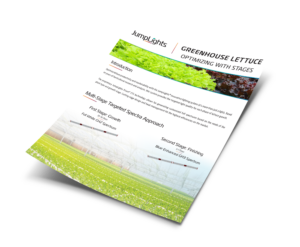
Stages
1. First Stage: Growth (20-30 days)
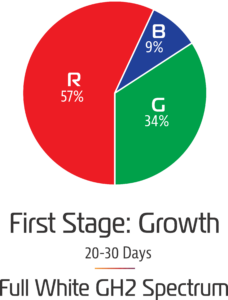
Improving crop yields begins with a focus on development of leaf area to capture all available light energy for photosynthesis. The GH2 custom lettuce growth spectrum incorporates a high level of red light, which encourages the expansion of leafy plants, while the presence of moderate blue light helps regulate elongation. This unique spectral blend creates an environment rich in photons but low in energy, promoting optimal growth without stress. This also results in an initial lower leaf density allowing for efficient airflow distribution across the expanding leaves.
A significant amount of green light is provided to prevent oversaturation of surface tissues. This green light also plays a crucial role in regulating the accumulation of anthocyanin levels in red-leaf varieties, ensuring that plant development takes precedence over antioxidant production. The GH2 spectrum offers a comfortable and efficient environment for both plant growth and human work activities.
The emitted light spectrum contains prominent peaks in blue, amber, and red, slightly deviating from the chlorophyll a and chlorophyll b action spectrum. Research has shown that these off-peak emissions are more efficient at driving photosynthesis.
2. Second Stage: Finishing (5-7 days)

During the second phase, known as the finishing stage, of leafy plant production, we strategically manipulate light quality to trigger specific adaptations in the plants. The GH3 spectrum, tailored for lettuce finishing, is characterized by a high concentration of blue light. This abundance of blue light encourages the thickening and deepening of the leaves, resulting in a more desirable texture and vibrant color that appeals to our customers.
This unique spectral blend combines a high photon and high-energy mix, fostering the development of antioxidants and essential vitamins. It proves to be the optimal spectrum for the final 5-7 days of production. During this phase, leaf size has already been established, allowing us to shift our focus towards enhancing nutrient content, extending post-harvest shelf life, intensifying color, and preserving crispiness.
The GH3 spectrum is carefully designed to deliver substantial amounts of narrow-band blue light, inducing the necessary stress for leaf finishing. Simultaneously, it incorporates a mid-spectrum band of light that creates a visually pleasing working environment.
This spectrum achieves the ideal balance of light, evenly distributing each segment (RGB) at a ratio of 29% to 36%. It represents a complete, well-rounded, and customized spectrum, all while maintaining an exceptional efficacy rate of 2.9 µmol/J.
Final Thoughts
When planning your leafy greens lighting application, it’s crucial to take into light wavelengths, timing, light intensity and the strategic positioning of fixtures to achieve the best possible uniformity. Avoid relying on guesswork; instead, let JumpLights be your trusted partner for all your leafy green horticulture lighting requirements. We cover everything from spectrum selection, multi-stage system scheduling, precise light intensity calculations, to strategic light fixture placement. JumpLights has got you covered!
If you’d like to benefit from our expertise, feel free to complete the form below to request a complimentary lighting map and calculations, along with an approximate cost estimate for your unique project.
Tell us about what you grow and how you grow it and one of our friendly, helpful pros from JumpLights® will be in touch with you soon.


